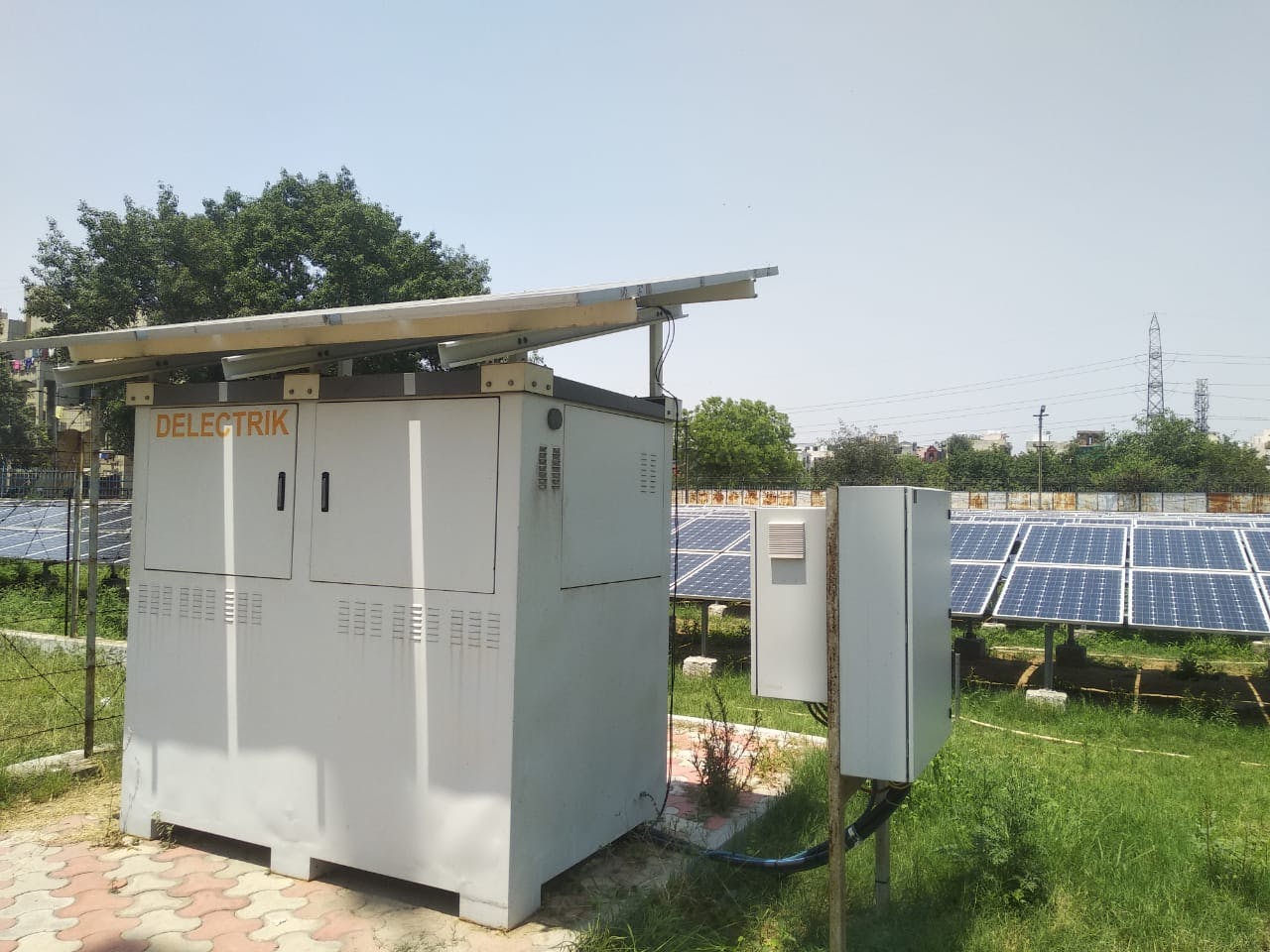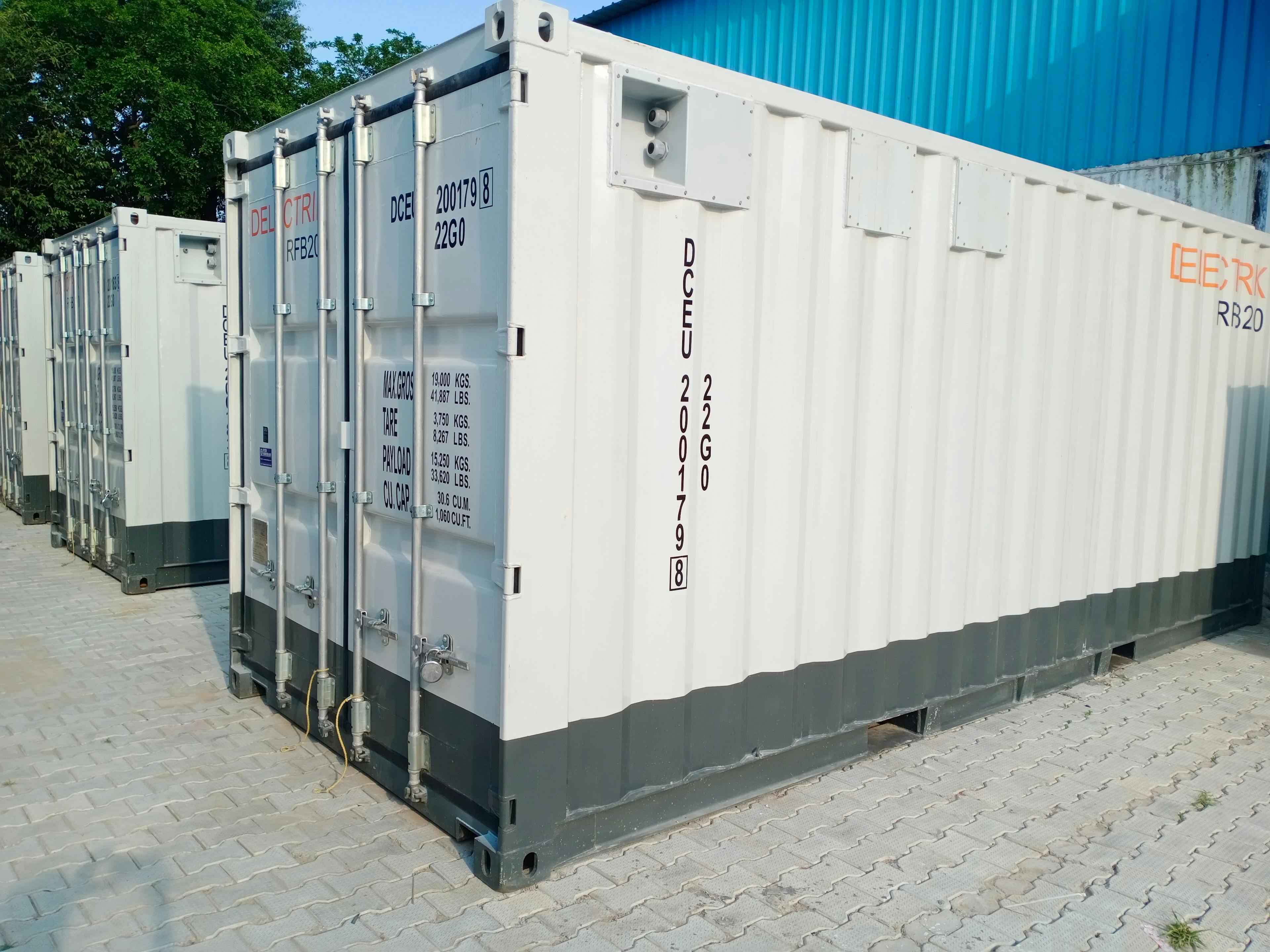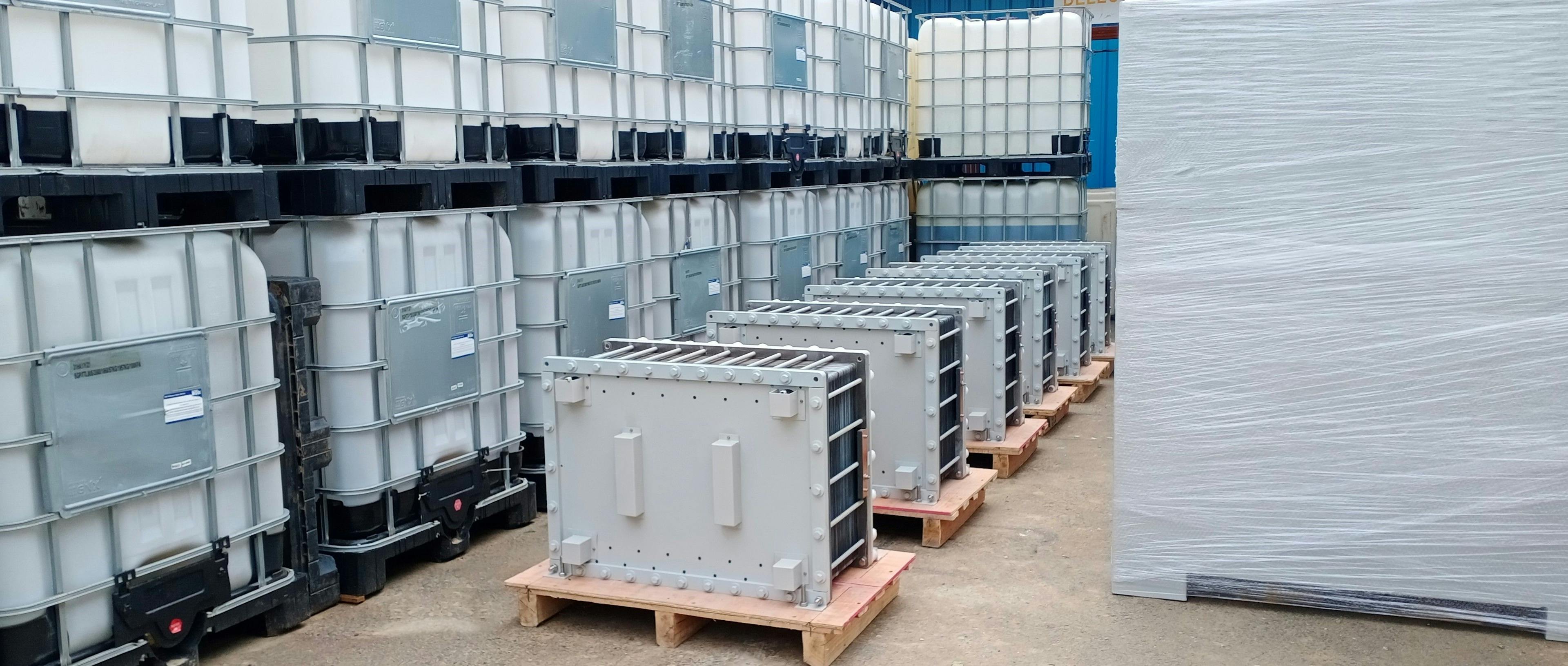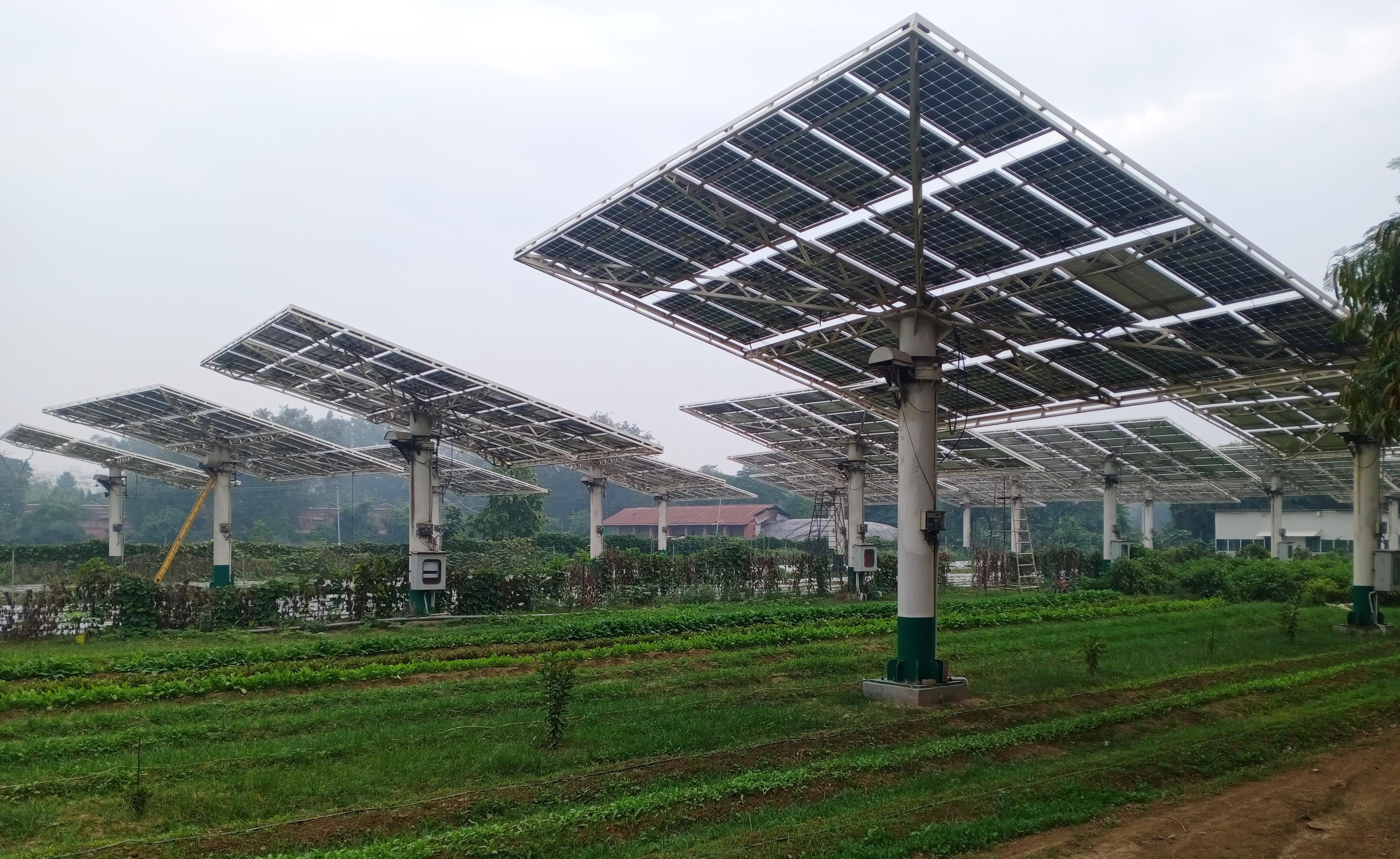Abstract
The global energy landscape is witnessing forceful discussions on our urgent and comprehensive need to switch to renewable energy sources. Energy generated from natural resources such as sunlight, wind and water are clean, sustainable and do not produce greenhouse gas emissions that contribute to climate change. However, one of the challenges of renewable energy is that it is intermittent, meaning that it is not always available when needed. This intermittency presents a significant challenge to the integration of renewable energy into the grid, as it can cause instability and fluctuations in the supply of electricity.

Thus, energy storage has become increasingly important to ensure stability and reliability of renewable energy sources. Delectrik, an Indian company based in Gurugram, was founded in 2016 with a vision to provide sustainable and affordable electricity via providing energy storage solutions. Delectrik’s products based on vanadium redox chemistry, when combined with renewables provides for 24×7 clean energy whereby mitigating the use of fossil fuels and its harmful effect on the climate and provides affordable electricity to its users. This case study shares Delectrik’s journey so far, its entry and impact in Australia.
Introduction
As renewable energy becomes an essential part of the global energy mix, the discussions on energy storage has also intensified.
Vanadium Redox Flow Batteries (VRFBs) are a type of rechargeable battery that uses vanadium ions in two different oxidation states to store and release energy. Unlike other types of batteries, VRFBs store energy in liquid electrolytes, which flow through the battery during charging and discharging. VRFBs provide several advantages over other types of energy storage batteries.

Delectrik is an established VRFB original equipment manufacturer (OEM). It designs and manufactures VRFB systems from kW to MW scale. Delectrik says that its products are designed to offer highly scalable and flexible decentralised electricity solutions for various stationary applications. This class of battery employs an electrolyte where energy is stored and a cell stack where energy conversion occurs. Energy is stored chemically in different ionic forms of vanadium in a dilute acid electrolyte. The electrolyte is pumped from separate plastic storage tanks into flow cells across a membrane where one form of electrolyte is electrochemically oxidized, and the other is electrochemically reduced.
This creates a current that is collected by electrodes and made available to an external circuit. The reaction is reversible allowing the battery to be charged and discharged.
VRFBs are highly scalable, making them suitable for large-scale energy storage applications. They are considered safer, more scalable, and longer lasting than their lithium counterparts with a lifespan of more than 20 years.
Other battery types like lithium-ion are subject to a charging cycle but VRFBs come with vanadium electrolyte storage tanks, which can be replenished even when the system is supplying power.
“Multiple units of the 200-kWh battery system can be connected to build MWh-scale energy storage system for use in on-grid and off-grid applications in the commercial, industrial and utility space.” – Vishal Mittal, Founder, Delectrik Systems Private Limited
Australia Strategy
Delectrik’s products are based on patented Stack and System design using a proven and mature Vanadium Redox Flow Battery chemistry. The products are designed to offer a highly scalable and flexible energy storage solution based on customer needs. These systems can be customised and connected together to build capacities ranging from 10 kWh to 100’s of MWh. The company manufactures RFB10, RFB40 and RFB200 series of Vanadium Flow Batteries with 10 kWh, 40 kWh and 200 kWh capacity respectively. These systems are building blocks which can be connected to build even large systems of 100s of MWh. These systems are designed for use in residential, commercial, industrial and grid scale stationary Energy Storage applications. Delectrik is commercially selling these products in several regions such as USA, Australia, Western Europe, Middle East, and India.
“The battery system is based on vanadium redox chemistry and is built for outdoor use with integrated power electronics and controls solution.”
Most recently, Tdafoq Energy of Riyadh, Saudi Arabia has entered into a distribution and manufacturing license with Delectrik. Tdafoq Energy will exclusively sell Delectrik’s Vanadium Redox Flow battery products manufactured in India in the Gulf countries.
Delectrik’s Australia entry is a reflection of its aspirations to enable efficient energy storage systems across diverse geographies. Delectrik chose Australia, primarily for its vanadium resource availability and its enormous market potential in the mining sector. Western Australia was the first state in which the company launched its products. Delectrik is working with local Australian companies as distribution cum value added resellers of the products. It has also established a 100 percent subsidiary company in Australia.
Vanadium developer Technology Metals Australia (ASX: TMT) and its wholly owned subsidiary vLYTE has entered a memorandum of understanding (MoU) with Delectrik. The MoU encompasses the supply of vanadium products directly from Technology Metals’ Murchison Technology Metals Project (MTMP) and the supply of vanadium electrolyte by vLYTE to Delectrik within Australia. Specific volumes to be supplied are to be finalised in the next phase of the agreement.
TMT is progressing the development of the MTMP in Western Australia to produce ‘high purity’ vanadium pentoxide (V2O5), and through vLYTE is investigating downstream production of vanadium electrolyte in Australia. Through this MoU, TMT aspires for MTMP to be a stable, secure, primary producer of vanadium pentoxide to support the deployment of vanadium redox flow batteries (VRFBs) for long duration energy storage across the globe. Delectrik is currently in discussions with TMT to secure commercially appropriate offtake agreements for vanadium pentoxide, to address issues of price volatility and primary supplies.

The MoU effective for five years, contemplates supporting Delectrik’s VRFB rollout within Australia, demonstrating the significant potential in Australia for VRFB use in a range of applications, from replacing diesel generation at remote mine sites to storing solar energy for EV charging stations.
Seeing The Future
According to the US Geological Survey (USGS), Australia sits on approximately 1 million tonnes of vanadium reserves. Vanadium is currently used in high-strength, low-alloy steel and is emerging as a critical battery storage commodity for its use in vanadium redox flow batteries, ideally suited to large, grid scale storage solutions. It is one of the new economy minerals that are used in advanced and renewable energy technologies. Vanadium’s top four producers worldwide are China, Russia, South Africa and Brazil. China is responsible for the majority of the world’s vanadium output at 66 percent, with Russia at 17 percent and South Africa at 8 percent globally.
Vanadium is not found in its metallic form in nature but occurs in more than 60 minerals as a trace element in a range of rock types.
It occurs most commonly in titaniferous magnetite deposits and in uraniferous sandstone and siltstone, as well as bauxites and phosphorites. Vanadium also occurs in fossil fuels such as crude oil, coal, and tar sands. Nearly all of the world's vanadium is derived from mineral concentrates (typically vanadium-rich and titanium-rich magnetite) separated from mined ore, or as a by-product of steelmaking slags.
Vanadium is available in the market primarily in the forms of vanadium pentoxide (V2O5) and, to a lesser extent, vanadium trioxide (V2O3) for non-steel applications. For steel production, it is commonly sold as the alloy ferrovanadium (FeV). The trade in vanadium products is characterised by a lack of transparency, as there is no centralised market for price tracking. This opacity contributes to significant price fluctuations in the vanadium market, which are closely tied to the steel industry's needs and the demand from developing nations. Additionally, the dynamic evolution of battery storage technology on a global scale is fueling growing interest in Australian vanadium resources. The United States Geological Survey (USGS) reported that in September 2017, the average price of vanadium pentoxide reached US$5.05 per pound. This marked a substantial increase of over 50 percent compared to the 2016 price, which stood at US$3.38 per pound.


Planning Ahead
VRFBs are playing a large role in securing green energy future and can be 100 percent recycled without affecting environmental conditions. These batteries are ideal for large-scale energy storage. The key lessons from this case study are –
- A definite opportunity exists for technology companies to diversify their IP by entering into new geographies
- Indian tech is offering energy storage solutions to the Australian market needs, similar opportunities exist in other sectors as well
- Develop key investors, strategic customers and supplier relationships
- Understanding the end customers and their needs is the key
- An opportunity to reflect, as the supply of critical minerals like Vanadium are affected by geopolitical relations, geological characteristics, state-led commercial considerations, and export policies of producing nations. How can the dependency of green and digital supply chains on a narrow set of nations, firms, production technologies, and transport infrastructure be addressed? Tech collaborations and offerings like Delectrik open new channels of engagement
- Building relationships is a strategic asset when engaging with economies like India, the evolving Critical Minerals Partnership will depend on the awareness of each other’s needs. The buyer-supplier relationship is symbiotic, bespoke, and exclusive in the critical minerals sector, and asks for an early long-term commitment.
Australia’s engagement with India in the resources sector has largely been led by three main trends – first, Australian resource exports to India, particularly metallurgical coal, but also copper and gold, that makes up the bulk of its merchandise trade, second Australian direct investment into mining tenements leases in India & Indian investment in Australian resource assets through partnerships and operations, and third the competitive edge and role of Australian companies in mining equipment and technology services (METS) in modernising India’s mining sector. Beyond these three core pillars of Australia India resource engagement both countries are now exploring ways to deepen their critical minerals engagement as part of the MoU, which was signed in 2020 on Critical Minerals, as part of the Australia India Comprehensive Strategic Partnership (CSP). This case study showcases the variety of engagements that are viable in this upcoming sector.
The bilateral engagement in the critical minerals space will also depend on the ability to align Australia’s resource capacity and capabilities and its depth of experience in regulation, operations, markets, or sustainability with India’s manufacturing potential, technology, and commercial led innovation opportunities. Hence, the need for exploring a whole-of-value chain perspective that promotes the development of upstream extraction, midstream processing, and downstream manufacturing.
Planning early and swiftly is the best shot. Technology availability, risk appetite, access to capital are factors that will define the bilateral engagement in this space.
